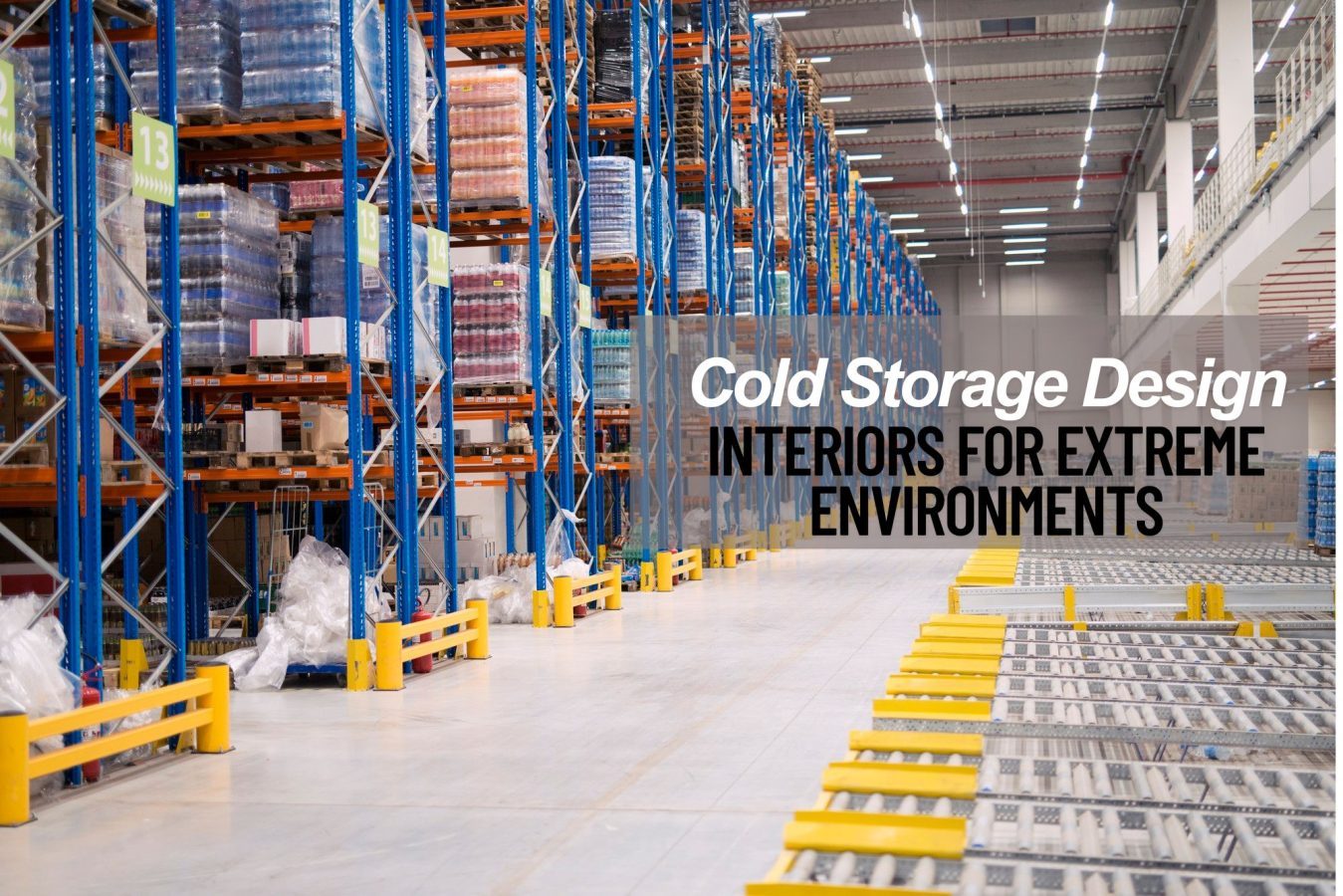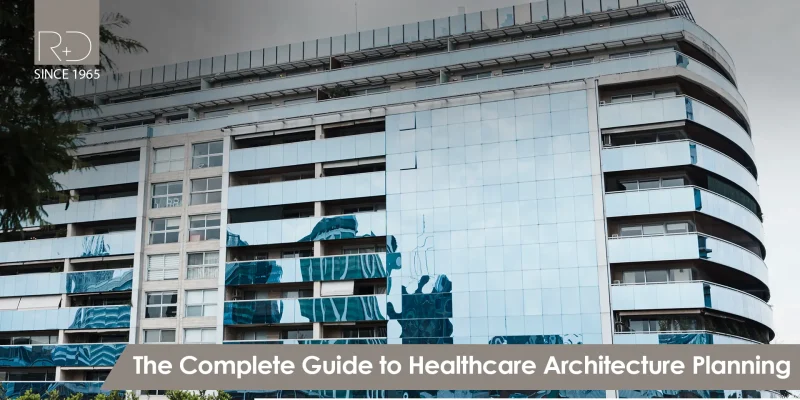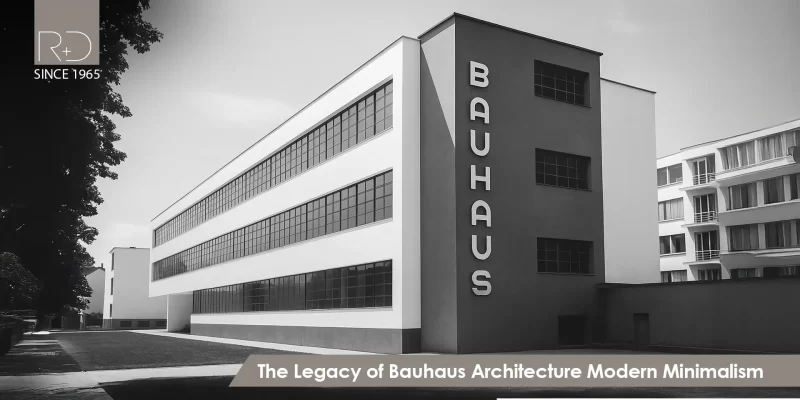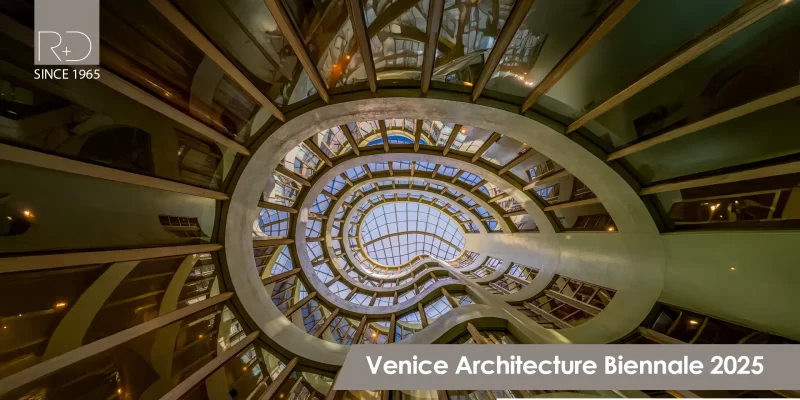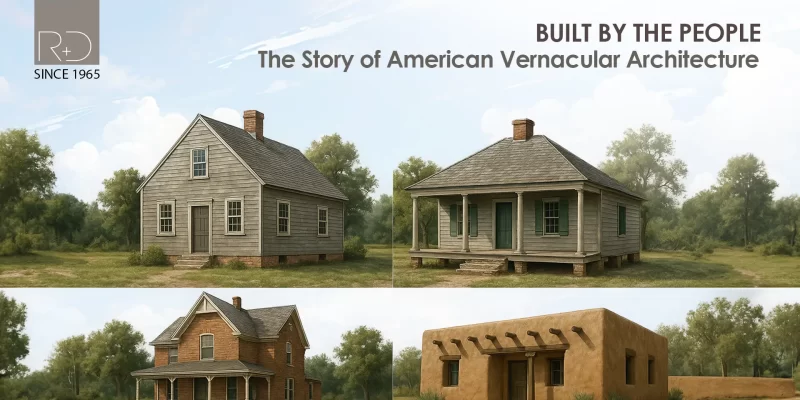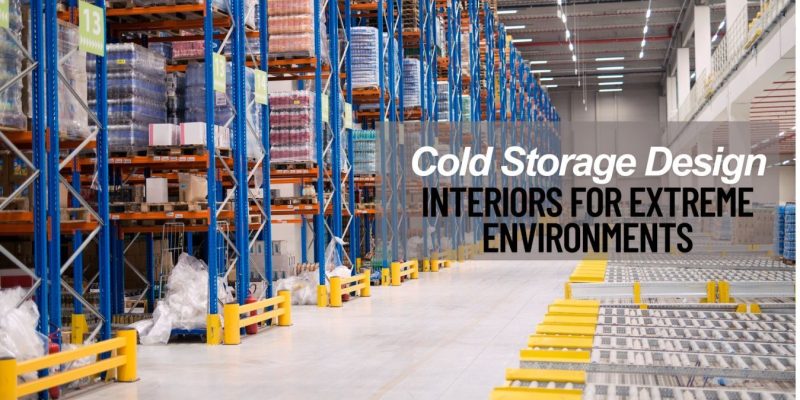Table of Contents
When it comes to safeguarding temperature-sensitive products, the design of your cold storage warehouse can make or break your operation. Whether it’s food, pharmaceuticals, or biotech materials, the stakes are high, and efficiency is key. In this blog, we delve into the critical elements of cold storage warehouse design and construction, providing essential insights to help you boost operational efficiency, maintain product safety, and stay ahead of regulatory requirements. Whether you’re building from scratch or optimizing an existing facility, this guide will ensure your cold storage solutions are both reliable and future-ready.
Cold Storage Warehouse Interior Design
Effective cold storage warehouse design is pivotal for maintaining product integrity and optimizing operational efficiency. Key considerations of a cold storage facility design include:
• Optimal Layout and Space Utilization: Designing an efficient floor plan minimizes the facility’s footprint while maximizing storage capacity. This involves creating a streamlined workflow that logically organizes storage areas, staging zones, and loading docks to reduce travel distances and enhance material handling efficiency.
• Multi-Temperature Zones: Segmenting the warehouse into multiple temperature zones accommodates various product categories with different storage requirements. Incorporating adjustable partitions or modular walls provides flexibility to adapt to changing inventory needs and seasonal demand fluctuations.
Cold Storage Construction
The construction phase is critical to ensure the facility’s durability and performance. Essential factors include:
• Structural Supports: Designing the building to minimize internal structural columns within storage areas enhances maneuverability for forklifts and order-picking operations. This approach reduces obstructions, facilitating smoother operations and reducing the risk of accidents.
• Flooring Systems: Implementing well-constructed, level concrete slab floors that are free of cracks and damage is essential. Utilizing post-tensioned slabs eliminates the need for expansion joints, and incorporating adequate insulation with vapor barriers or sub-floor heating prevents frost heave, ensuring long-term structural integrity.
Refrigerated Warehouse Design
Designing refrigerated warehouses involves incorporating advanced technologies and energy-efficient systems:
• Energy-Efficient Refrigeration Systems: Selecting high-efficiency refrigeration units, such as those with Energy Star certification and variable speed compressors, reduces energy consumption and operational costs. Implementing heat recovery systems can capture waste heat for use in space or water heating, enhancing overall energy efficiency.
• Automation and Technology Integration: Utilizing Automated Storage and Retrieval Systems (AS/RS) and robotics enhances storage density and operational efficiency. Integrating Internet of Things (IoT) sensors enables real-time monitoring of environmental conditions, allowing for proactive adjustments and maintenance to ensure optimal storage conditions.
The Rising Need for Automation in Cold Storage Warehousing
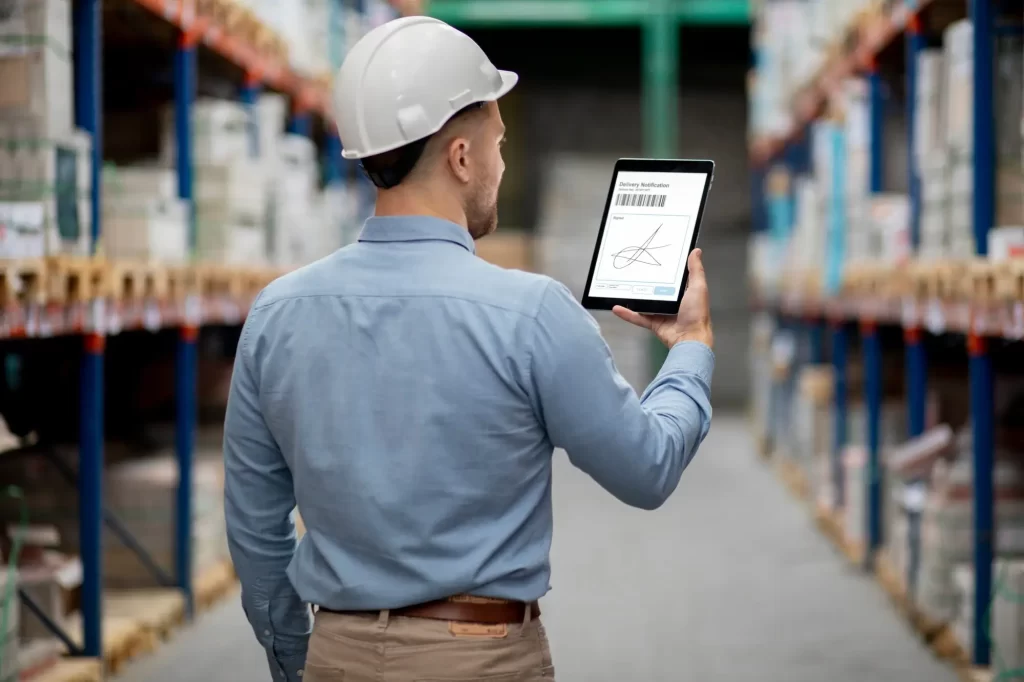
The increasing demand for cold storage facilities isn’t simply a trend; it’s becoming a necessity due to the expanding requirements of industries like food and pharmaceuticals. These sectors rely heavily on efficient storage solutions to maintain the quality and safety of their products.
However, while the need for more cold storage space is surging, the workforce available to staff these facilities is not keeping pace. This workforce gap has made it difficult to meet the rising demands, creating an urgent need for a solution that doesn’t rely heavily on human labor.
Automation: The Essential Solution
Automation emerges as the most practical and effective response to this dilemma. By implementing automated systems, cold storage facilities can significantly increase their throughput and operational efficiency. Here’s why automation is crucial:
- Optimized Resources: Automation allows for better management of labor and energy, enabling facilities to operate more efficiently with fewer employees.
- Integrated Systems: Automated solutions often incorporate building design, advanced robotics, and smart operating practices. This integration leads to streamlined operations and enhanced productivity.
- Consistency and Reliability: Machines can operate consistently around the clock without fatigue, ensuring a reliable flow of goods in and out of storage.
Ultimately, the drive towards automation in cold storage warehousing is fueled by the need to bridge the gap between supply and labor, ensuring businesses can meet market demands while maintaining operational efficiency.
Features for Reliable Automation in Low-Temperature Environments
Automated systems operating in cold environments must have specific features to maintain their reliability and efficiency. Here’s how they can be adapted to withstand chilly conditions:
- Remote Monitoring Capabilities
Having the ability to monitor systems remotely is crucial. It minimizes the need for technicians to spend excessive time in freezing conditions. Remote visibility helps in diagnosing and addressing issues from a distance, ensuring minimal exposure to harsh temperatures.
- Cold-Resistant Materials
Components such as lubrication and connectors need to be specially designed for cold environments. Cold-resistant lubricants ensure machinery operates smoothly without succumbing to the thickening that standard oils might face in lower temperatures.
- Quick Disconnect Couplings
These allow technicians to service the system efficiently. Quick disconnect couplings enable fast and easy maintenance, reducing the time spent working in uncomfortable cold conditions. This feature is especially valuable in environments where speed and safety are top priorities.
- Robust System Design
The overall system should be robust enough to handle the thermal stresses that come with extremely low temperatures. Ensuring that all parts are designed to function seamlessly in the cold ensures longevity and performance stability.
By incorporating these features, automation systems can perform reliably even in the harshest of cold environments, thereby supporting continuous operation without frequent interruptions.
Why Choose an Automation System Before Designing a Cold Storage Warehouse?
- When planning a cold storage warehouse, thoughtful consideration of automation systems from the onset can lead to remarkable advantages.
- Integrated Design for Optimal
EfficiencyChoosing an automation system early ensures that the warehouse’s layout and structure are perfectly aligned with the capabilities of your selected technology.
- Unlock Future Flexibility
By deciding on automation tools and technologies before breaking ground, you’re also future-proofing the warehouse. Early selection means designs can accommodate potential technology upgrades and scalability.
- Cost Savings Through Holistic Planning
Planning with automation in mind can significantly cut costs during construction and beyond. By aligning the building’s design with the automation system’s requirements, unnecessary expenses on modifications and patches later can be avoided, resulting in better allocation of resources and a quicker return on investment.
Industrial Cold Storage Solutions
Comprehensive industrial cold storage solutions address the broader operational and compliance needs of the facility:
• Compliance with Regulatory Standards: Designing facilities in adherence to guidelines from regulatory bodies, such as the Food and Drug Administration (FDA), ensures the safe storage of temperature-sensitive products. Implementing Hazard Analysis and Critical Control Points (HACCP) principles helps identify and mitigate potential food safety hazards.
• Cleanliness and Sanitation: Maintaining sanitary conditions is paramount. Incorporating seamless construction techniques eliminates crevices where bacteria can thrive. Installing floor heating systems aids in drying surfaces after cleaning, reducing moisture accumulation and inhibiting bacterial growth.
Key Factors of Designing and Building an Efficient Cold Storage Facility
Below, we explore critical components essential to the development of efficient and compliant cold storage solutions:
Temperature Control Systems
One of the most critical aspects is temperature control, as precise conditions are essential for preserving product quality and safety. Advanced monitoring systems play a vital role in maintaining consistency, offering real-time tracking that quickly detects any deviations. Immediate corrective actions can then be taken to prevent spoilage and ensure a stable environment.
To further enhance reliability, redundancy measures are crucial. Incorporating backup refrigeration units and emergency power supplies provides an added layer of protection, ensuring uninterrupted operation even in the event of equipment malfunctions or power failures. With these safeguards in place, cold storage facilities can maintain efficiency, prevent losses, and uphold industry standards.
Energy-Efficient Cold Storage
Balancing performance with sustainability is essential in cold storage design, where reducing energy consumption not only lowers operational costs but also minimizes environmental impact. Thoughtful strategies help optimize efficiency without compromising functionality.
High-quality insulation plays a crucial role in maintaining stable internal temperatures. By minimizing heat ingress, well-insulated walls, floors, and ceilings reduce the workload on refrigeration systems, leading to lower energy consumption and improved overall efficiency.
Lighting choices also contribute to energy savings. Switching to LED lighting reduces heat output and consumes significantly less electricity compared to traditional lighting options. This not only cuts energy costs but also helps maintain cooler ambient conditions, further easing the burden on refrigeration units.
Insulation & Vapor Barriers
Effective insulation and vapor barriers are essential for maintaining stable internal temperatures and preventing moisture-related issues in cold storage facilities. Selecting the right insulation materials with appropriate R-values ensures optimal thermal resistance, aligning with the facility’s specific temperature requirements. Beyond insulation, properly installed vapor barriers play a crucial role in preventing condensation buildup within walls and ceilings. By controlling moisture infiltration, these barriers help mitigate the risk of mold growth and structural damage, preserving both the integrity of the facility and the quality of stored products. Thoughtful design and careful implementation of these elements contribute to a more efficient, durable, and reliable cold storage environment.
Commercial Refrigeration Systems
The efficiency and reliability of commercial refrigeration systems form the backbone of any cold storage operation, ensuring consistent temperature control and preserving product quality. A well-designed system, tailored to the specific needs of the facility, optimizes performance while minimizing energy consumption. Beyond design, regular maintenance is essential for sustaining long-term efficiency, preventing unexpected breakdowns, and extending the lifespan of critical components. By integrating thoughtful system planning with proactive upkeep, cold storage facilities can achieve both operational reliability and cost-effective energy management, creating a seamless and dependable refrigeration environment.
Cold Storage Compliance (FDA/USDA)
Ensuring compliance with FDA and USDA regulations is a fundamental requirement for cold storage facilities handling food and pharmaceuticals, as strict adherence to these standards guarantees both safety and legal operation. The design and construction of the facility must align with regulatory guidelines, incorporating structural and operational elements that meet industry requirements. Beyond physical design, meticulous documentation practices play a critical role in maintaining compliance, with detailed records of temperature logs and sanitation procedures serving as essential proof of regulatory adherence. By integrating proper facility design with rigorous record-keeping, cold storage operations can uphold safety standards, avoid legal complications, and ensure the integrity of stored products.
Warehouse Layout Optimization
Optimizing warehouse layout is essential for maximizing storage capacity and streamlining operational workflows, creating an environment that balances efficiency with accessibility. Thoughtful space utilization ensures that storage density is maximized without compromising ease of product retrieval, allowing for smoother inventory management and reduced downtime. Beyond storage, integrating the physical layout with daily workflows minimizes handling times, enhances organization, and reduces the risk of errors, ultimately improving overall efficiency. By designing a layout that seamlessly supports both storage needs and operational processes, cold storage facilities can achieve greater productivity and reliability.
Food-Grade Storage Design
Designing a food-grade storage facility requires careful attention to materials and structural elements that uphold the highest standards of safety and hygiene. Surfaces must be constructed from non-porous, easy-to-clean materials that resist bacterial growth, ensuring a sanitary environment that prevents contamination. Equally important is the implementation of pest control measures, with features such as sealed entry points and efficient waste management systems playing a crucial role in keeping storage areas secure. By integrating these design considerations, facilities can maintain the integrity of stored food products while complying with strict health and safety regulations.
Pharmaceutical Cold Storage
Pharmaceutical cold storage demands precise temperature control and strict security measures to preserve the integrity and efficacy of sensitive medications. Maintaining uniform temperatures throughout the storage environment is essential, preventing fluctuations that could compromise drug stability. Equally critical is the implementation of access control measures, ensuring that only authorized personnel can enter storage areas, reducing the risk of tampering or theft. By combining meticulous temperature management with robust security protocols, pharmaceutical storage facilities can uphold regulatory standards and protect the quality of stored products.
Design-Build Construction Services
Choose Russell and Dawson’s design-build construction services in USA. We bring several advantages, including a single point of responsibility, enhanced collaboration, and time and cost efficiency. Our commitment to sustainability aligns with industry standards like LEED, focusing on energy-efficient designs that reduce operational costs and environmental impact.
As the top design-build construction services provider in USA, our expertise ensures that facilities meet operational requirements, adhere to regulatory standards, and incorporate energy-efficient solutions.
How to Design a Cold Storage Warehouse
Designing an effective cold storage warehouse involves several critical considerations:
• Needs Assessment: Begin by evaluating the specific storage requirements, including the types of products, volume, and necessary temperature and humidity controls.
• Space Planning: Determine the total area required, accounting for storage rooms, cooling systems, administrative offices, and loading docks to ensure seamless operations.
• Temperature Zones: Designate areas within the facility to accommodate various temperature needs, such as refrigerated sections for perishable goods and freezer sections for frozen products.
• Insulation and Vapor Barriers: Utilize high-quality insulation materials and properly installed vapor barriers to maintain consistent internal temperatures and prevent moisture issues.
• Energy Efficiency: Incorporate energy-efficient systems, such as advanced refrigeration units and LED lighting, to reduce operational costs and environmental impact.
Custom Cold Storage Facility Design
Designing a custom cold storage facility in the USA requires meticulous planning to ensure optimal temperature control, energy efficiency, and compliance with regulatory standards. Key considerations include:
1. Effective Insulation and Environmental Control
Selecting insulation materials with high thermal resistance reduces heat transfer, maintaining stable internal temperatures. Additionally, sealing all gaps, cracks, and openings in the building envelope prevents air infiltration, ensuring uniform temperature distribution throughout the facility.
2. Energy-Efficient Refrigeration Systems
Investing in energy-efficient refrigeration systems can significantly reduce operating costs. Opting for high-efficiency units minimizes energy consumption, while implementing heat recovery systems allows the capture and reuse of waste heat generated by refrigeration equipment for space or water heating purposes.
3. Automation and Technology Integration
Integrating automation and advanced technologies enhances operational efficiency. Automated Storage and Retrieval Systems (AS/RS) maximize storage density and streamline inventory management. Deploying Internet of Things (IoT) sensors enables real-time monitoring of temperature, humidity, and other environmental conditions, facilitating proactive adjustments to maintain optimal storage environments.
4. Compliance with Regulatory Standards
Compliance with regulatory standards is paramount. Designing the facility in accordance with Food and Drug Administration (FDA) guidelines and other relevant regulations ensures the safe storage of temperature-sensitive products. Establishing robust documentation and record-keeping systems aids in tracking temperature records, product movements, and inventory transactions, demonstrating adherence to industry best practices.
5. Incorporating Energy-Saving Elements
Incorporating energy-saving elements further enhances sustainability. Utilizing LED lighting equipped with automated features, such as variable frequency drives on fans and automatic lighting sensors, improves energy efficiency. Additionally, sharing refrigeration systems between processing and cold storage areas can lead to improved efficiency and cost reductions.
6. Site Selection and Expansion Planning
Selecting an appropriate site and planning for future expansion are also vital considerations. Choosing a location near transportation lines saves time and reduces costs, while ensuring adequate space for potential growth accommodates evolving business needs.
7. Engaging a Specialized Design-Build Firm
Engaging a specialized design-build firm like Russell and Dawson can significantly enhance the development of a custom cold storage facility. With a rich history of delivering over 10,000 projects across various sectors, our comprehensive services encompass architectural design, mechanical, electrical, plumbing, and structural engineering, ensuring a cohesive approach to complex projects. By collaborating with such an experienced and specialized design-build firm, you can ensure that your cold storage facilities are designed and constructed to meet specific operational requirements, industry standards, and sustainability goals.
How Taller Warehouses Enhance Energy Efficiency in Cold Storage Facilities
Building taller warehouses plays a pivotal role in enhancing energy efficiency for cold storage operations. Here’s how:
- Reduced Heat Load:
Traditional warehouses with expansive roofs allow solar energy to increase the heat within the facility. This added heat burden demands more from the refrigeration system. By constructing taller buildings rather than larger ones, the roof area exposed to solar radiation is minimized, thereby lessening the heat introduced into the warehouse.
- Optimized Building Footprint:
Taller warehouses significantly reduce the overall footprint needed for storage. This reduction in floor area not only decreases the heating element necessary for deep-freeze environments—like heated floors—but also simplifies temperature management as there’s less ground surface generating additional heat.
- Vertical Storage and Automation:
High-rise designs capitalize on vertical storage facilitated by automation systems. These cutting-edge technologies maximize storage capacity without requiring excessive horizontal space. This approach not only translates to better energy utilization but also creates substantial operational cost savings over time.
By employing these strategies, taller cold storage facilities can achieve enhanced energy efficiency, resulting in notable savings on operational expenses and a reduced environmental impact.
How Can Automation Address Labor Challenges in Cold Storage Warehouses?
Navigating the hiring landscape in cold storage facilities can be daunting, particularly when dealing with frigid environments that deter potential workers. However, automation offers a robust solution to these labor challenges.
- Improved Efficiency
Automated systems can handle repetitive tasks with precision and speed, significantly enhancing the overall productivity of a warehouse. Drones, for example, can streamline inventory checks, reducing the need for manual labor and increasing accuracy.
- Enhanced Safety and Comfort
Working in sub-zero temperatures poses health risks and discomfort for human workers. Automation, such as robotic arms and conveyor systems, minimizes human exposure to such harsh conditions, prioritizing safety and reducing turnover.
- Consistent Performance
Unlike human workers, machines do not tire or slow down in cold environments. This reliable performance ensures that operations run smoothly despite external temperature challenges.
- Optimized Facility Design
When integrated with facility design, automation allows for more compact and efficient storage solutions. Technologies like automated storage and retrieval systems (AS/RS) can maximize space and streamline operations, making cold storage environments less labor-intensive.
By leveraging these technologies, businesses can not only address labor shortages but also enhance the efficiency and safety of their cold storage warehouses.
Comprehensive Cold Storage Design Solutions for Temperature-Sensitive Goods
Cold Chain Logistics Solutions
A well-orchestrated cold chain logistics system ensures the integrity of temperature-sensitive products at every stage of the supply chain. From carefully coordinated refrigerated transportation that maintains consistent temperatures in transit to real-time monitoring powered by IoT-enabled sensors, every detail is designed to safeguard product quality. With continuous tracking of temperature and humidity levels, businesses can ensure that goods remain in optimal condition from origin to destination. Regulatory compliance and meticulous documentation further enhance traceability, creating a streamlined and reliable cold storage ecosystem.
Energy-Efficient Refrigerated Warehouse Design
Designing an energy-efficient refrigerated warehouse requires a strategic approach that optimizes insulation, layout, and refrigeration technology. High-performance insulation materials with superior R-values minimize heat transfer, reducing the strain on refrigeration systems and lowering overall energy consumption. Thoughtfully planned layouts streamline operations by shortening the distance between storage areas and loading docks, preventing unnecessary energy loss during product movement. Advanced refrigeration systems equipped with variable speed compressors and heat recovery options further enhance efficiency, ensuring a sustainable and cost-effective solution for cold storage needs.
Cost to Build a Cold Storage Facility
Constructing a cold storage facility involves various factors that influence the overall cost, including size, location, design specifications, and equipment choices. To obtain an accurate estimate tailored to your project’s needs, it’s advisable to consult with experienced construction firm like Russell and Dawson. To get a personalized quote and discuss your specific requirements, consider reaching out to Russell and Dawson directly. They can provide detailed insights and cost estimates based on your project’s needs.
Perishable Goods Storage
Effective storage of perishable goods—such as dairy, proteins, fresh produce, and frozen foods—requires meticulously designed facilities that maintain precise temperature and humidity levels. Implementing advanced cooling systems, robust thermal insulation, and reliable temperature control mechanisms is essential to prevent spoilage and extend shelf life. Additionally, integrating security systems safeguards the quality of these products throughout the supply chain.
Frozen Food Warehouse Design
Designing a warehouse for frozen food storage requires careful attention to maintaining sub-zero temperatures to preserve the quality of the products. This begins with ensuring structural integrity by selecting materials that can withstand extreme cold and prevent condensation. Efficient layouts are then implemented, using pallet racking systems optimized for cold storage, which maximize space utilization and make access easier. Additionally, energy efficiency plays a crucial role in reducing operational costs, achieved through the integration of energy-efficient refrigeration systems and high-performance insulation. This holistic approach ensures a well-functioning, cost-effective, and sustainable frozen food warehouse design.
Medical Supply Cold Storage
Cold storage for medical supplies, including pharmaceuticals and vaccines, requires strict temperature controls to ensure the efficacy of the products. This involves maintaining precise temperature conditions, typically between 2°C and 8°C, with some products necessitating even lower temperatures, such as -70°C. To safeguard the quality of these sensitive items, advanced monitoring systems are implemented, providing real-time tracking of temperatures and triggering alarms to detect any deviations promptly. Compliance with health regulations and industry guidelines is essential, ensuring that all storage conditions meet the required standards to preserve product safety and efficacy throughout their lifecycle.
Cold Storage for Agriculture
Cold storage for agricultural products, such as fruits and vegetables, plays a crucial role in extending freshness and reducing waste. This is achieved through precise temperature and humidity control, carefully adjusting the conditions to meet the specific needs of different types of produce to prevent spoilage. Additionally, strategically locating cold storage facilities near production areas and markets minimizes transportation time, helping to preserve the quality of the products. The design also takes into account scalability, ensuring that the facilities can easily adapt to the seasonal fluctuations in produce volume, making them both efficient and versatile for long-term use.
Biotech Storage Facilities
Biotech storage facilities are essential for preserving biotechnology products, such as biological samples and reagents, which require highly specialized cold storage environments. These facilities are designed to maintain ultra-low temperatures, with equipment capable of reaching temperatures as low as -80°C or even colder, ensuring the integrity of sensitive materials. Redundancy systems are also a critical component, incorporating backup power supplies and refrigeration units to guarantee uninterrupted operation, even in the event of a failure. Additionally, these facilities must adhere to stringent regulatory compliance standards, meeting the rigorous industry guidelines that govern the safe storage of sensitive biological materials.
Cold Storage Warehouse Construction Company
For a Cold Storage Warehouse Construction Company in the USA, experience and expertise are key. Russell and Dawson, a leading design-build firm, specializes in industrial and commercial projects, making us an excellent choice for cold storage construction.
With 59+ years of experience and 10,000+ completed projects, we understand the complexities of temperature-controlled facilities, including insulation, refrigeration, and energy efficiency. Our integrated services covering architecture, engineering, HVAC, and sustainable design ensure seamless project execution.
Committed to energy efficiency and sustainability, Russell and Dawson incorporates net-zero strategies and LEED-certified solutions to help businesses reduce operational costs.
